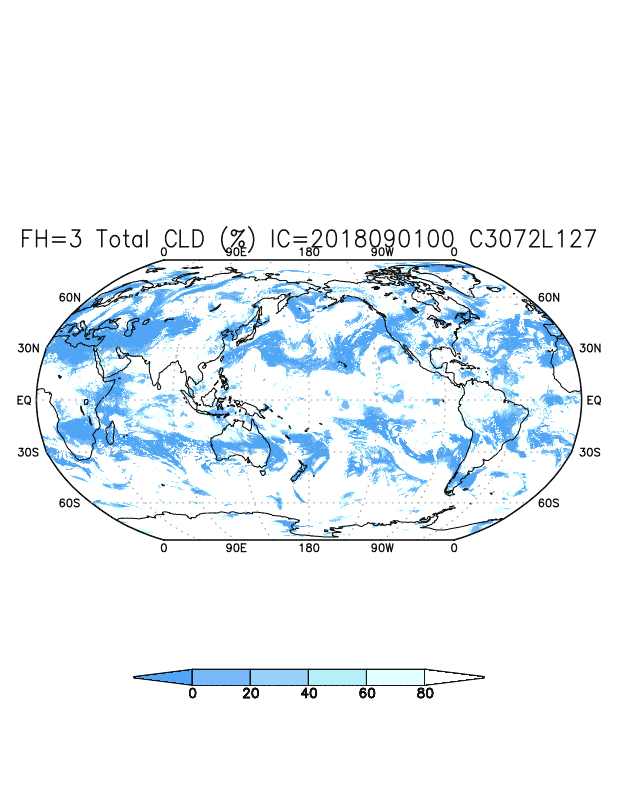GFS
|

Contacts:
Operational Links: June 12, 2019: Implementation of GFS Version 15; initial implementation of Unified Forecast System (UFS) with FV3 dynamic core in the NCEP Production Suite: March 22, 2021: Implementation of GFS Version 16 in the NCEP Production Suite: |
The Global Forecast System (GFS) is the cornerstone of NCEP's suite of numerical guidance, providing global atmospheric and wave predictions at 13 km resolution. The GFS is used for initial and/or boundary conditions for other NCEP production suite forecast systems for regional, ocean and wave prediction. The Global Data Assimilation System (GDAS), which run a 4D hybrid ensemble-variational data assimilation scheme, produces initial conditions for the GFS forecast. The GFS is run four times a day, producing forecasts up to 16 days in advance. The forecast component uses the Finite Volume Cubed (FV3) model with a resolution of ~13 km, with the atmosphere coupled to the NCEP Global Wave Model. In the vertical, the model is divided into 127 vertical layers. It produces hourly forecast output for the first 120 hours, then 3 hourly for days 5-16. Details on the June 2019 implementation of the initial FV3 version of the GFS (GFSv15) and the March 2021 implementation of GFSv16 can be found in the links listed below. Details on the June 2019 implementation of the initial FV3 version of the GFS (GFSv15) and the March 2021 implementation of GFSv16 can be found in the "Implementations" and "Documentation" links on the left side of this page. Below is a plot of total cloud cover from a 72 hour run from the coupled, global UFS model at C3072 (~ 3km) resolution with a 127 layer atmosphere with FV3 dynamical core, 0.25 degree resolution MOM6 ocean model and 0.25 degree resolution CICE6 ice model. The physics in the atmosphere included GFDL microphysics, NoahMP land model, RAS convection, scale aware boundary layer scheme, unified gravity wave drag, and RRTMG radiation. This model used mixed-mode FMS, with atmospheric dynamics running with 32 bit precision and everything else with 64 bit precision. The run was made on WCOSS Dell 3.5, 24 hours at a time, using restart capability. The run used 233 nodes with one write group using 45 nodes, taking about 40000 seconds per 24 hour forecast.  |
